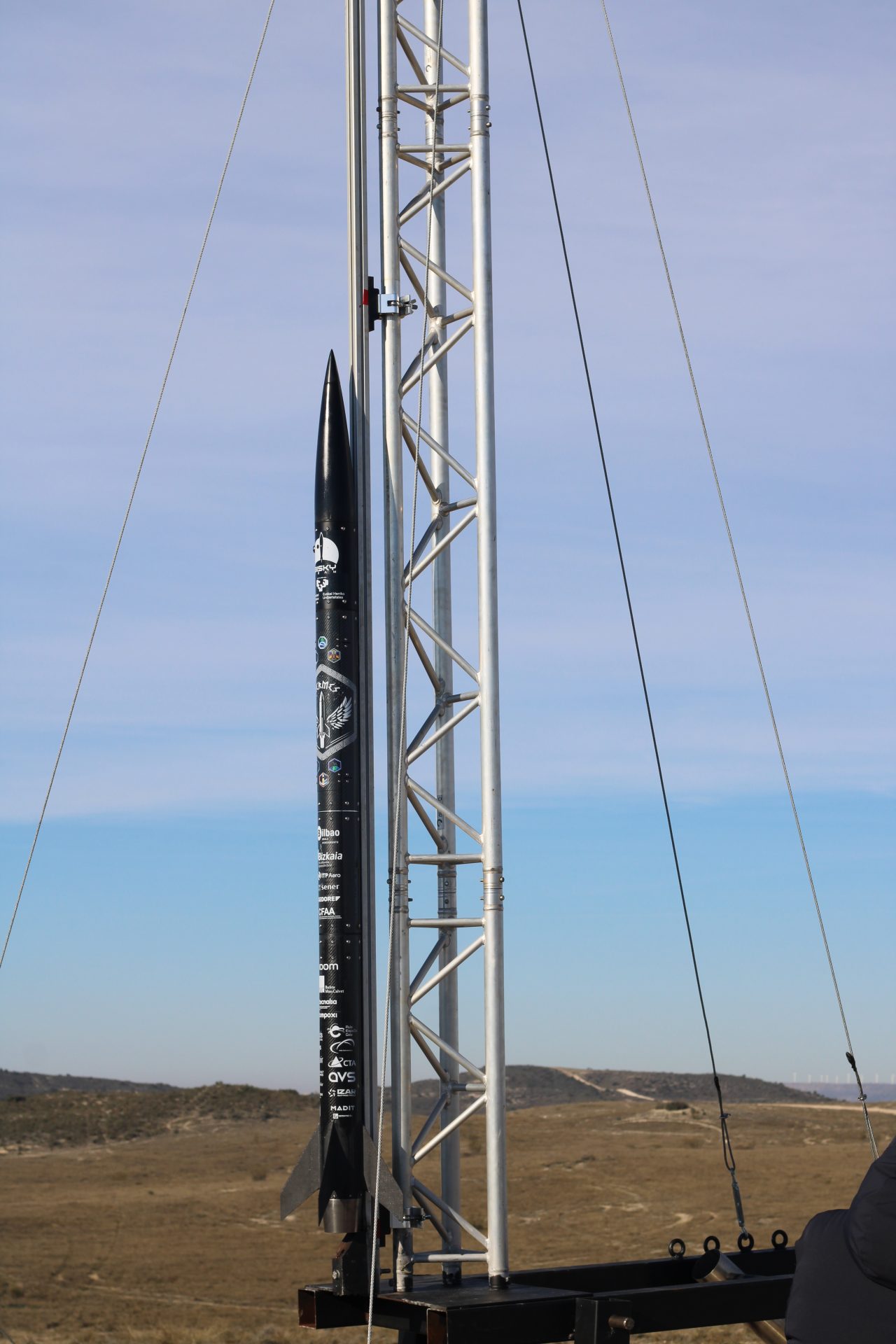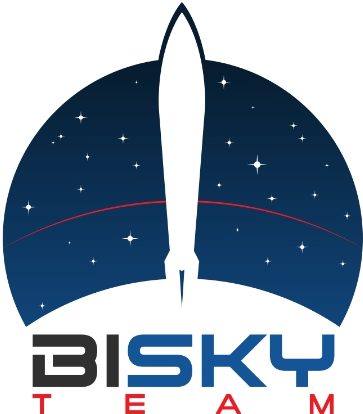HERMES
HERMES is the first supersonic rocket developed and launched by the team, opening the door to various significant developments for future team rockets. The team’s main goal was to expand knowledge on supersonic rockets and test new elements developed by them in flight to see how they behave in this new regime, as crossing the sound barrier drastically changes the rocket’s aerodynamic characteristics, potentially introducing dynamic phenomena that could endanger the rocket. The design of HERMES began in early August 2023, following studies on the supersonic regime and its flight issues.
HERMES was estimated to reach an altitude of 4.5 km, with the rocket’s dimensions being 1.8 m in wingspan and 10 cm in diameter. Like Atlas, HERMES is a modular rocket made of carbon fiber. Given that HERMES is a supersonic rocket with a planned apogee of 4.5 km, the team had to contact the San Gregorio army ground forces located in Zaragoza again to use their facilities for the launch.


On December 26th, the operations proceeded correctly, and all systems functioned correctly, thanks to the prior work and good organization by all team members, managing to be ready for launch within three hours. After successfully completing all pre-launch operations, it was determined that the optimal time for the launch would be 12:30 PM.
From the moment the rocket left the launch rail until moments after reaching the supersonic regime, HERMES maintained a stable flight attributed to the correct behavior of the passive control elements. Due to a failure, there was an early termination of the flight, but this did not prevent achieving most of the team’s estimated objectives. Moreover, we have already found a solution to this issue and will implement it in subsequent flights. The rocket and all new subsystems developed by the team reached the estimated maximum speed in flight, entering the supersonic regime. The navigation and data collection systems worked correctly, collecting crucial flight information.
